
| Pecan Stem Girdler (one synonym : Cryptophasa bipunctata Scott, 1864) XYLORYCTIDAE, GELECHIOIDEA | (donherbisonevans@yahoo.com) and Stella Crossley |
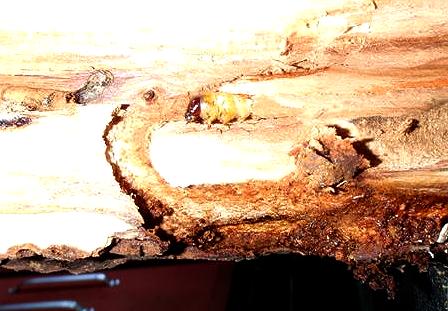
(Photo: courtesy of
Mark Hartley, Sydney, New south Wales)

| Pecan Stem Girdler (one synonym : Cryptophasa bipunctata Scott, 1864) XYLORYCTIDAE, GELECHIOIDEA | (donherbisonevans@yahoo.com) and Stella Crossley |

(Photo: courtesy of
Mark Hartley, Sydney, New south Wales)
This Caterpillar is pale brown with sparse hairs, and has a dark brown head. It bores into the bark of trees, covering the holes with dark brown silk and frass.
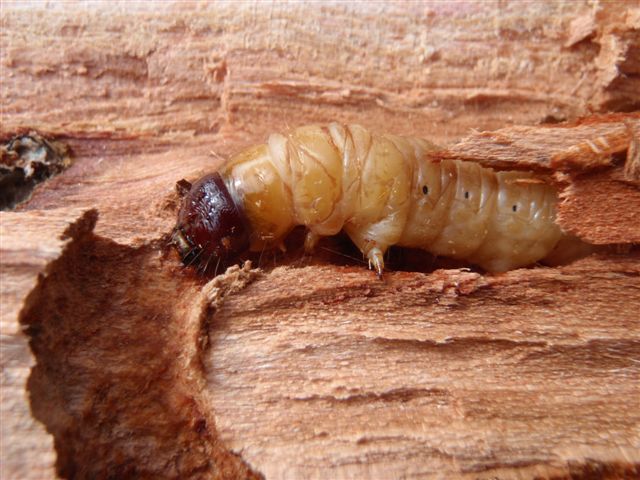
It is an agricultural pest on crops in the ROSACEAE family such as :
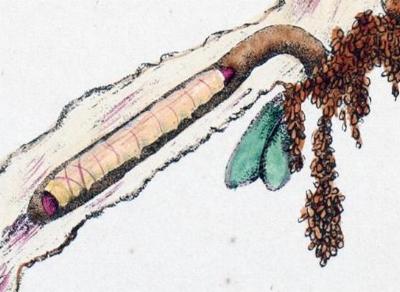
The caterpillar is also known to attack plants from other families such as :
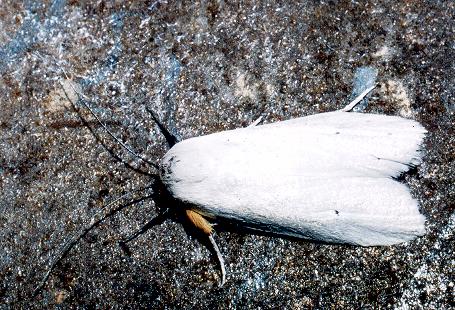
The adult moth has satin white forewings, each often with a black dot near the centre. The hindwings are grey.
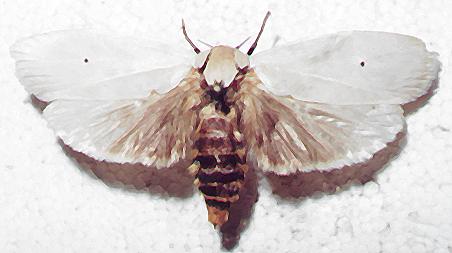
The body is black with yellow bands and a yellow tip. Also the upper part of each leg is covered in orange hairs. The moths have a wing span of about 4 cms.

The moths have a peculiar display when threatened: they lie down on their backs or sides, extending the wings upwards, and curl the abdomen over displaying the yellow tip.
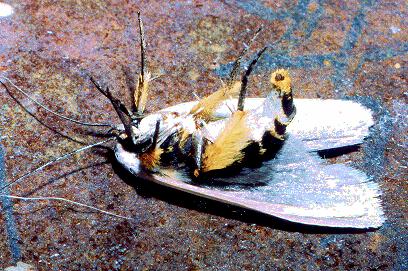
Specimens have been taken in taken in
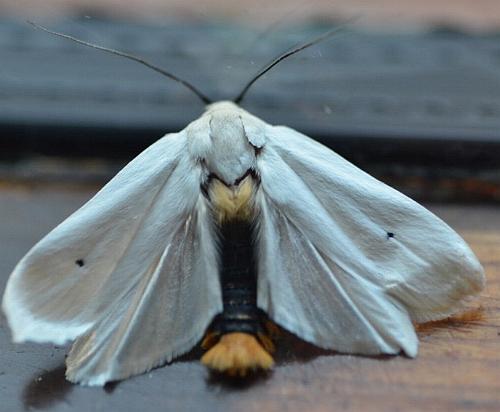
Attempts are being made to control the pest using:

Further reading :
Ian F.B. Common,
Moths of Australia,
Melbourne University Press, 1990, pl. 6.5, pp. 229-230.
Ian McMillan,
Maroga melanostigma, Xyloryctine Moths of Australia,
Blog, Friday, July 9, 2010.
Harriet, Helena, and Alexander W. Scott,
Australian Lepidoptera,
Australian Lepidoptera and their Transformations,
Volume 1 (1864), p. 9, and also
Plate 3.
H.D.J. Wallengren,
Lepidoptera. Species Novas Descripsit,
Kongliga Svenska Fregatten Eugenies Resa Omkring Jorden (1851-1853),
Entomologiska Bidrag, Volume IL, Part 1 (1861), p.387, No. 79.
 caterpillar |  butterflies |  Lepidoptera |  moths |  caterpillar |
(updated 7 February 2013, 24 October 2025)